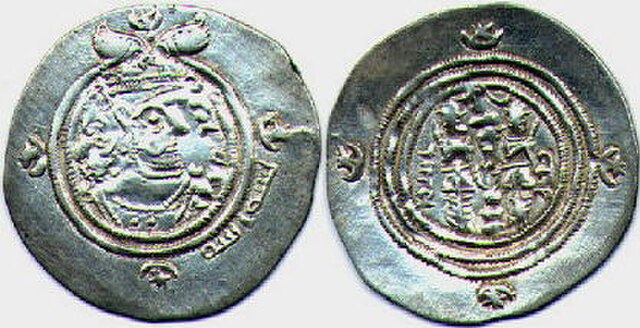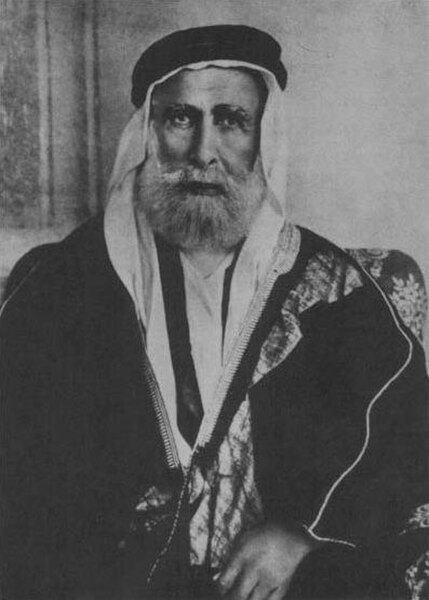The history of Islam concerns the political, social, economic, military, and cultural developments of the Islamic civilization. Most historians believe that Islam originated with Muhammad's mission in Mecca and Medina at the start of the 7th century CE, although Muslims regard this time as a return to the original faith passed down by the Abrahamic prophets, such as Adam, Noah, Abraham, Moses, David, Solomon, and Jesus, with the submission (Islām) to the will of God.
Coin of the Rāshidūn Caliphate (632–675 CE). Pseudo-Byzantine type with depictions of the Byzantine emperor Constans II holding the cross-tipped staff and globus cruciger.
Close-up of one leave showing chapter division and verse-end markings written in Hijazi script from the Birmingham Quran manuscript, dated between c. 568 and 645, held by the University of Birmingham.
1314 manuscript illustration by Rashid ad-Din depicting the Negus of medieval Abyssinia declining a Meccan delegation's request to surrender the early Muslims.
The rāshidūn caliphs used symbols of the Sasanian Empire (crescent-star, fire temple, depictions of the last Sasanian emperor Khosrow II) by adding the Arabic expression bismillāh on their coins, instead of designing new ones.
Political aspects of Islam
Political aspects of Islam are derived from the Quran, ḥadīth literature, and sunnah, the history of Islam, and elements of political movements outside Islam. Traditional political concepts in Islam include leadership by elected or selected successors to Muhammad, known as Caliphs in Sunnī Islam and Imams in Shīʿa Islam; the importance of following the Islamic law (sharīʿa); the duty of rulers to seek consultation (shūrā) from their subjects; and the importance of rebuking unjust rulers.
Close-up of one leave showing chapter division and verse-end markings written in Hijazi script from the Birmingham Quran manuscript, dated between c. 568 and 645, held by the University of Birmingham.
Muhammad's widow, Aisha, battling the fourth caliph Ali in the Battle of the Camel (16th-century miniature from a copy of the Siyer-i Nebi)
Hussein bin Ali, the Sharif and Emir of Mecca from 1908 to 1924 and King of the Hejaz from 1916 to 1924.
Osama bin Laden and Ayman al-Zawahiri of al-Qaeda have promoted the overthrow of secular governments.







